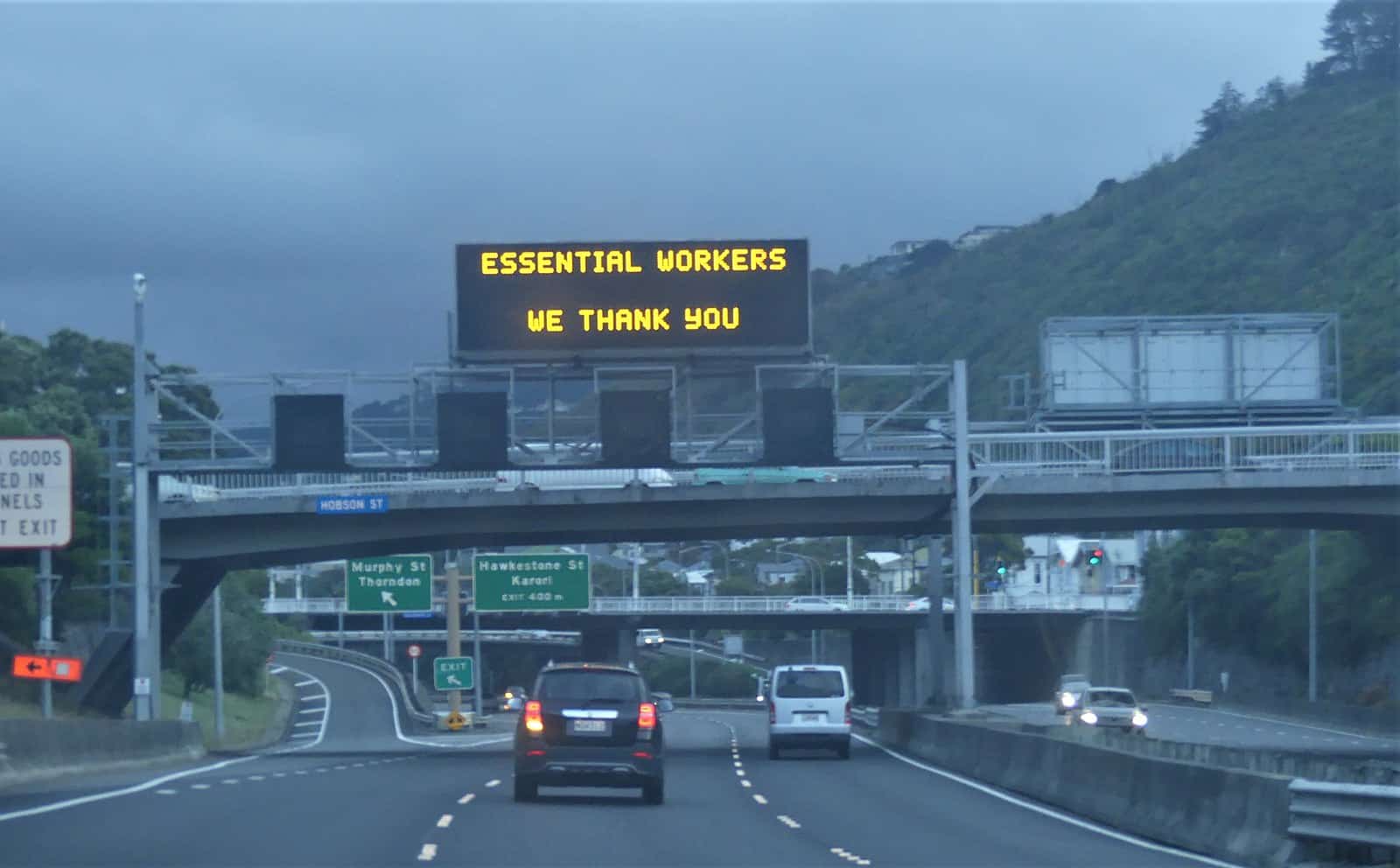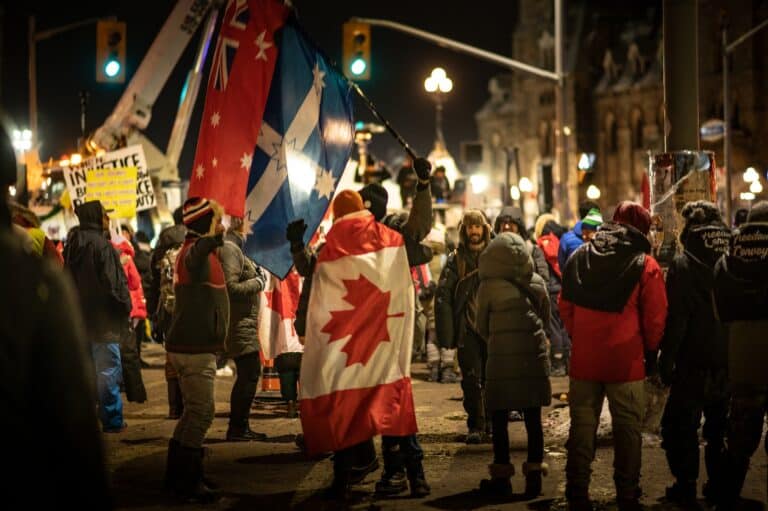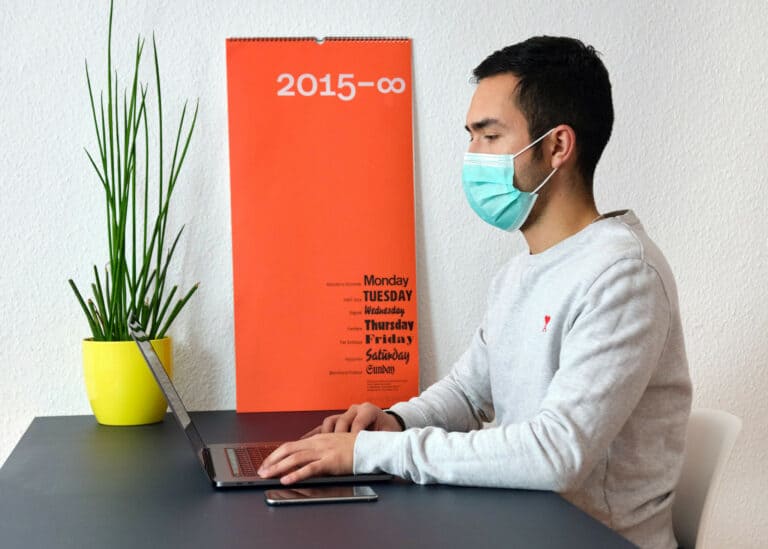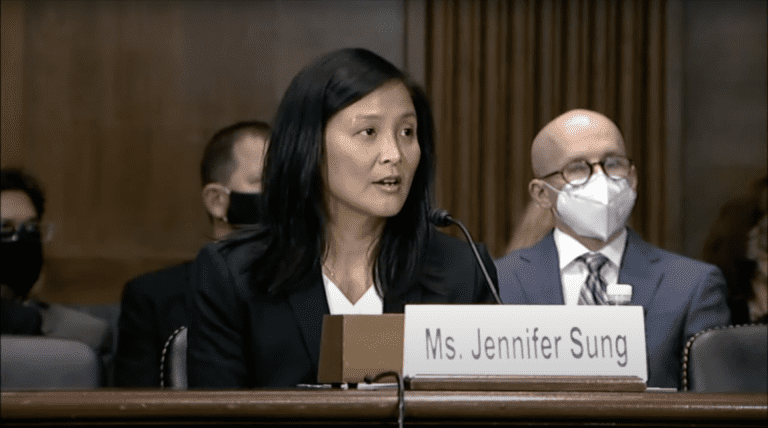
Jenny Hunter is an Associate General Counsel at the Service Employees International Union.
If you cast your mind back over the decades that have elapsed since March 2020, you might dimly remember the early-pandemic feeling of solidarity. While the American public has never been unanimous, about the pandemic or anything else, last spring there were “We’re All In This Together” yard signs, public applause for essential workers, and a bipartisan relief bill.
Today, that sense of solidarity has disappeared. At the height of a pandemic, large swaths of people refuse to follow public health guidelines and mock those who do. There are many reasons to be optimistic in 2021, but this change is not one of them.
This backlash against public health measures should be understood as part of a broader right-wing attack on progressive collective action: that is, ordinary people joining together to exercise power they would not have alone, to improve life for themselves and others. This attack is most evident in the way corporations and conservative politicians have for decades targeted workers’ ability to form unions.
In some sense the past 10 months of assaults on public health precautions has been a time-lapse version of this longer period in labor history. In both cases a societal calamity—the Great Depression and the pandemic—sparked some agreement that collective action was necessary. But both times the right quickly pushed back. It did so both rhetorically, by framing progressive collective action as un-American; and through policy changes that made it more difficult for people to act collectively. The result was a chasm of inequality of wealth and political power in one case, and hundreds of thousands of unnecessary deaths, disproportionately in black and brown communities, in the other.
Many scholars have told the story of the initial, qualified success of the National Labor Relations Act (NLRA), the subsequent backlash, and the resultant decline of the labor movement. The Wagner Act, passed in 1935, made it the “policy of the United States” to encourage collective bargaining. This policy was never actually universal; the NLRA entrenched existing racism and sexism by excluding agricultural and domestic workers, who were predominately people of color and women. But the decades after the passage of the Wagner Act saw dramatic growth in unionization and worker power.
Corporations and politicians opposed this successful progressive collective action from the beginning, and amended the NLRA through the Taft-Hartley Act of 1947. Rhetorically, Taft-Hartley’s proponents portrayed unions as “despotic” forces that deprived “the American working man” of his “dignity as an individual.” Substantively, the law discouraged collective action by prohibiting certain types of strikes and picketing. The federal courts also helped curtail worker collective action by giving peaceful labor speech less First Amendment protection than other types of speech. The Supreme Court justified this by, among other theories, positing that labor picketing is not really speech, but rather conduct that “call[s] for an automatic response to a signal, rather than a reasoned response to an idea.”
The growing attacks on public health precautions have mirrored this longer anti-union campaign. In March 2020, the shock of the pandemic led to appreciation for essential workers, and discussion of how we could “flatten the curve” by making collective sacrifices. But by April, there was a backlash. Much as the Taft-Hartley Act drew an equivalence between the right to participate in collective action and to refrain from it, anti-maskers made the medically nonsensical claim that the choices to wear or not wear a mask were equally valid. In an echo of the way judges portray union picket lines as intimidating hordes that cause unthinking compliance, the right wing began to attack public health precautions by calling those who follow them “sheep” and equating masks to slavery or “social control.”
As with attacks on labor, judges have channeled this antagonism. Justice Alito did so in a speech to the Federalist Society in November, when he called COVID-19 precautions “previously unimaginable restrictions on individual liberty.” In Roman Catholic Diocese v. Cuomo, the Supreme Court enjoined New York’s attendance restrictions for religious services in an opinion that ignored the fact that the state treated religious gatherings more favorably than non-religious gatherings with similar risks.
It is true that in a case like Roman Catholic Diocese the Court must weigh the justification for a government requirement against the individual rights the First Amendment protects. The Court could have concluded that individual rights are so precious that preserving them is worth an untold number of deaths. But instead, as in its earlier labor cases, it simply did not acknowledge the value of collective action, or the cost of its loss.
Of course, forming a union and complying with public health guidelines are not the same type of collective action. People can follow health guidelines on their own. But people can also advocate for better working conditions on their own, and in both cases the effort won’t work unless a critical mass of others join in. Unionization is something that, at least currently, only coworkers at the same company can do together, whereas everyone can wear masks and socially distance. But in both cases, people who are not taking the collective action benefit from it, too. Forming a union entails a significant risk of being fired or retaliated against. While some workers have allegedly been fired for asking others to wear masks, the more common risk of following health guidelines is social or familial tension.
Unionization and following public health guidelines fall at different along a spectrum of progressive collective action. At one end are social movements, like the labor and the civil rights movements, in which historically marginalized groups work to challenge entrenched injustice and inequity. At the other end are activities of citizenship, like voting and following public health guidelines: things everyone should do so society functions. While citizenship activities are not explicitly aimed at challenging injustice, they demonstrate the power ordinary people have when they act together. In a political system in which elected officials ignore the policy preferences of non-wealthy people except when they are organized, that demonstration by itself does challenge power structures and inequity.
Of course, the right wing does not oppose all collective action. Mainstream Republican institutions, for instance, funded and encouraged the January 6 protests against the certification of the Electoral College votes, if not the insurrection that followed, much as they created and supported the Tea Party movement a decade ago. Rather, recognizing its power, the right supports collective action whose aims are conservative, in the sense of preserving racial, political, and economic hierarchies.
While the right wing has made attacking progressive collective action a key component of its agenda, progressives have been slower to recognize how it is vital to achieving their aims, from a just economy to a participatory democracy. They have tended to focus on the (certainly acute) need for substantive policy changes like increasing the minimum wage and improving the chaotic response to the pandemic. But progressives must also prioritize policies that encourage progressive collective action, certainly through unions but also through voter registration, peaceful protest, and the inclusion of social movements in policy-making and enforcement. Only by doing this can we restore solidarity: the conviction, and the reality, that by acting together we can improve things for everyone.










Daily News & Commentary
Start your day with our roundup of the latest labor developments. See all
July 9
In Today’s News and Commentary, the Supreme Court green-lights mass firings of federal workers, the Agricultural Secretary suggests Medicaid recipients can replace deported farm workers, and DHS ends Temporary Protected Status for Hondurans and Nicaraguans. In an 8-1 emergency docket decision released yesterday afternoon, the Supreme Court lifted an injunction by U.S. District Judge Susan […]
July 8
In today’s news and commentary, Apple wins at the Fifth Circuit against the NLRB, Florida enacts a noncompete-friendly law, and complications with the No Tax on Tips in the Big Beautiful Bill. Apple won an appeal overturning a National Labor Relations Board (NLRB) decision that the company violated labor law by coercively questioning an employee […]
July 7
LA economy deals with fallout from ICE raids; a new appeal challenges the NCAA antitrust settlement; and the EPA places dissenting employees on leave.
July 6
Municipal workers in Philadelphia continue to strike; Zohran Mamdani collects union endorsements; UFCW grocery workers in California and Colorado reach tentative agreements.
July 4
The DOL scraps a Biden-era proposed rule to end subminimum wages for disabled workers; millions will lose access to Medicaid and SNAP due to new proof of work requirements; and states step up in the noncompete policy space.
July 3
California compromises with unions on housing; 11th Circuit rules against transgender teacher; Harvard removes hundreds from grad student union.